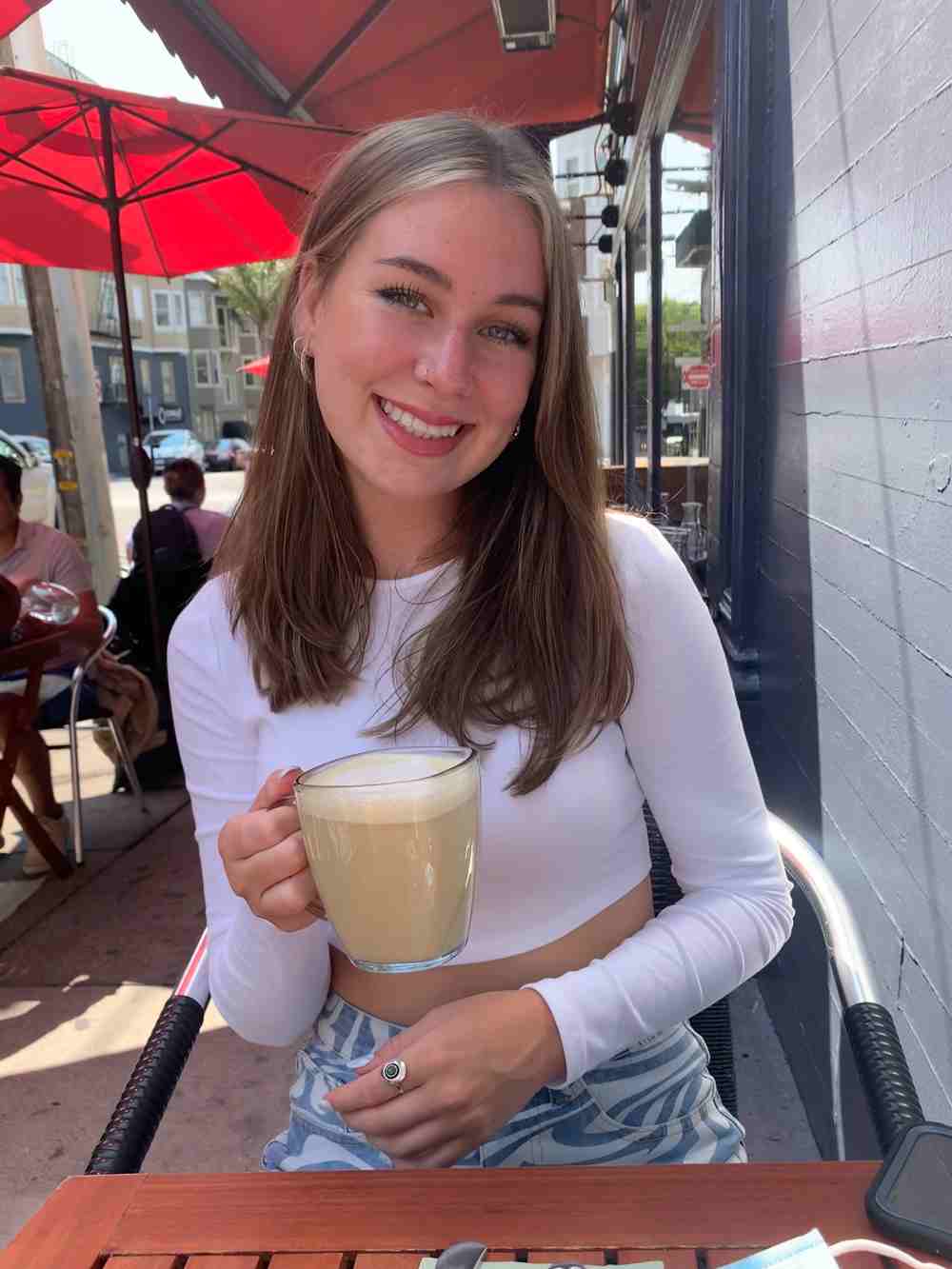Sequence Spotlights
Quinn Hefferan Nordlund

Can you talk about your professors in this course?
Professor Adams and Professor Eick are both very supportive and are some of my favorite professors that I have had during my time at GVSU. They both are very passionate about their work, which is clearly seen by all their students. Professor Adams is an art historian, and she was able to teach our class how to effectively analyze works of art. Many of us hadn’t had any prior experience with this, but still use this skill today. I have found that going to art museums and looking at artwork is now even more exciting, as I am able to better interpret the pieces and understand the message.
In addition to artwork, we discussed many pieces of literature as a class, including novels and plays. Professor Eick specializes in French literature and the Enlightenment, which made for interesting discussions about these “dangerous” pieces of literature.
Overall, both Professor Adams and Professor Eick create a comfortable environment for all their students, allowing for open discussion and growth. They promote interesting and unique learning methods, such as participation in “Reacting to the Past” (RTTP) games, which was definitely one of the highlights of the class.
What has been your favorite part of this course?
Dangerous Ideas has been my favorite class that I have been in, including both my time in high school and at GVSU. Throughout the course of this sequence, we were able to learn in unconventional ways. My favorite part of the class had to be the RTTP games that we were able to participate in. First semester, we were assigned a character to play in the French Enlightenment and discussed the “Encyclopédie”. I was assigned French composer Rameau, as I was taking music classes at the time, so this character was of personal interest to me. Second semester, we had an RTTP game regarding the creation of the Vietnam Veterans’ Memorial in Washington D.C. Throughout both games, students had to grapple with the struggle of playing someone who had different beliefs than they did. While this was initially challenging, it allowed both me and my fellow students to take on an alternate viewpoint and learn in a unique way. Dangerous Ideas made class fun and exciting.
How has this course helped you in your other classes/ future career?
I am an International Relations and German major, and so most of my classes are heavily rooted in discussion. Going into my freshman year at GVSU, I was very shy and uncomfortable speaking in front of larger groups. Dangerous Ideas helped me to become much better at public speaking. I felt very familiar with my classmates and my professors, and so felt secure participating in discussions about “taboo” subjects. This sequence has also helped me to become better at independent research, group work, and writing. All these skills have greatly benefited me in my current classes, and I have no doubt that they will continue to do so throughout the rest of my time at GVSU and onward.
What is your biggest takeaway from your sequence?
Dangerous Ideas allows for deep conversation, fostering the development of close bonds between fellow students and with Professor Eick and Professor Adams. I met some of my best friends while in this sequence, which is something that I will always be very grateful for. I am also very appreciative of our examination of “dangerous” literature and art. As I mentioned in an earlier response, our class spent time examining the Encyclopédie, which was undoubtedly very dangerous during its time. It emphasized the universality of human rights. We also researched various “dangerous” artists, such as Pablo Picasso and Diego Rivera, and read many “dangerous” novels, like “The Handmaid’s Tale”. Looking at these historical, controversial pieces has helped me to pay more attention to what is still viewed as dangerous today. It is often literature/artwork that holds the same underlying themes, such as gender or racial equity, or the challenging of the government. All people should read these “dangerous” books, analyze these “dangerous” artworks, and hold discussions with one another. This leads to better understanding as to why these pieces are regarded as so threatening, and what exactly they threaten.
Share this spotlight
Return to the listing of sequence spotlights.
